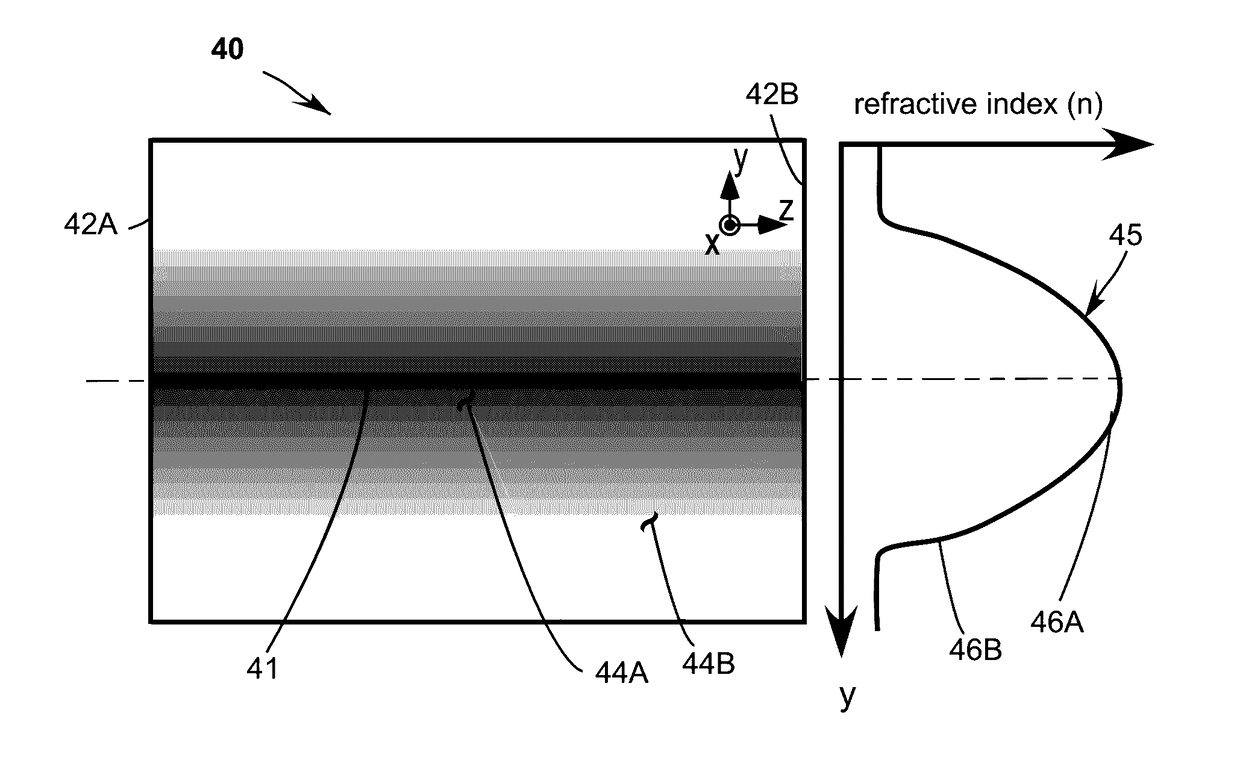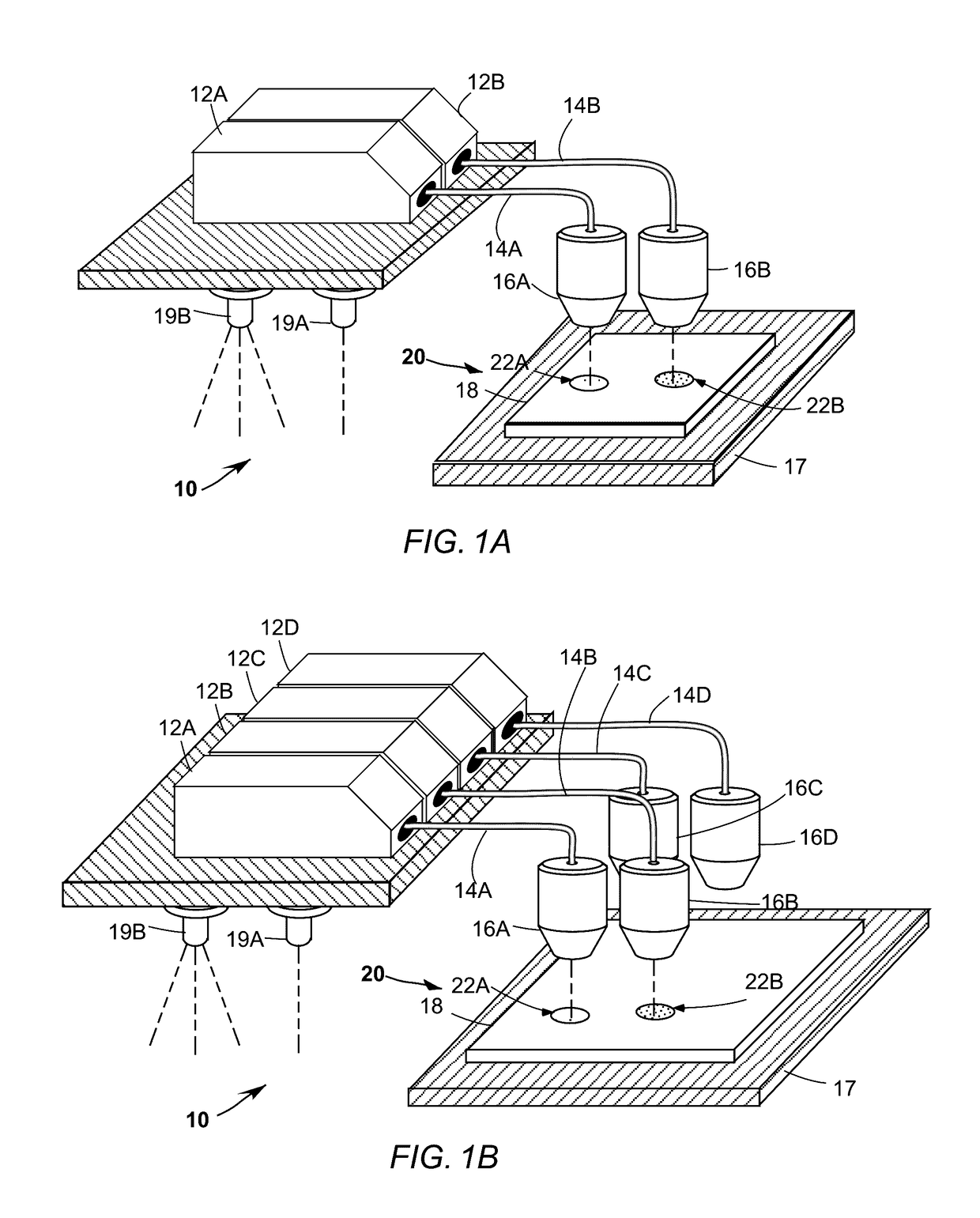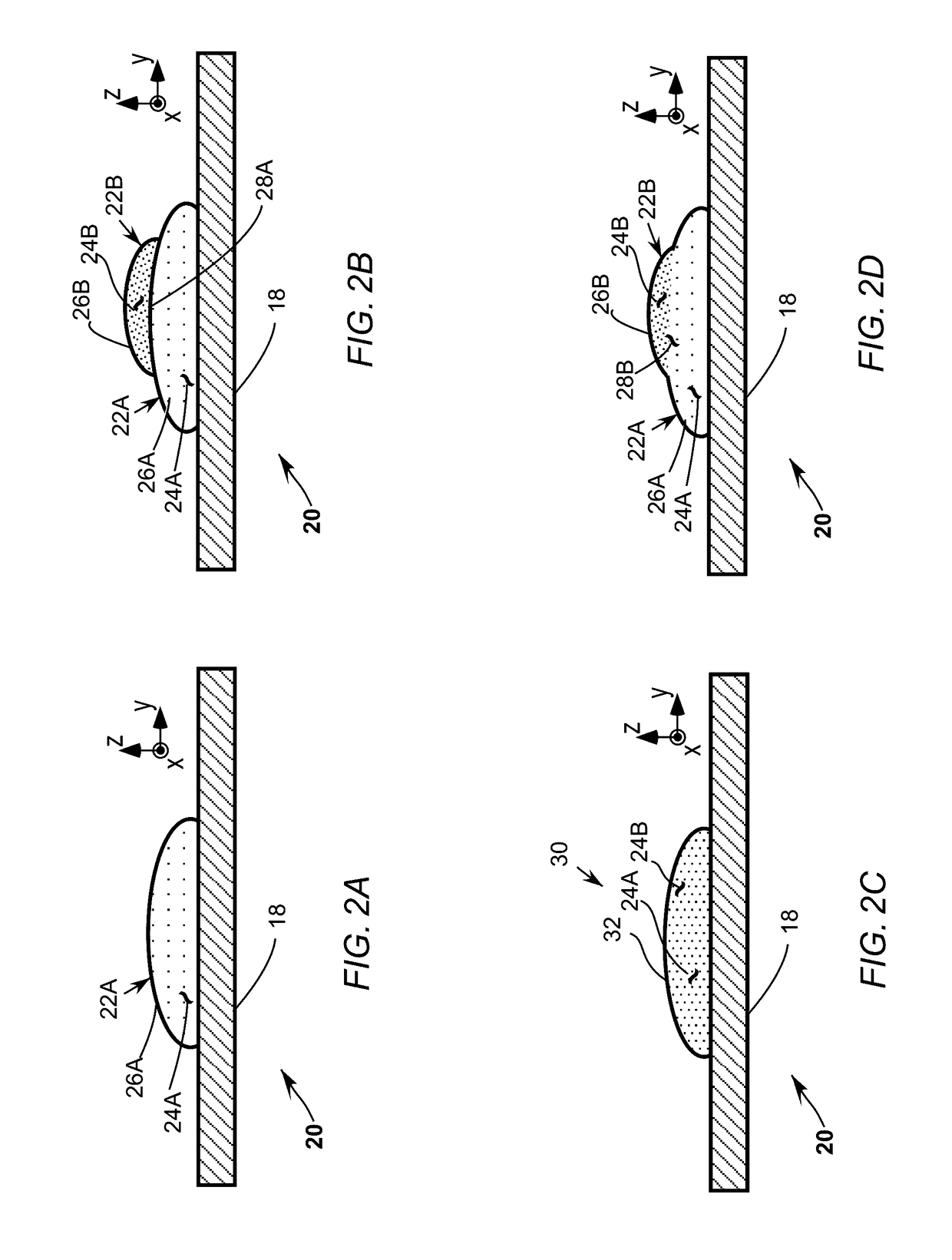Achromatic optical-dispersion corrected gradient refractive index optical-element
a technology of optical components and gradients, applied in the field of optical dispersion correction of refractive gradient index (grin) optic design and manufacture, can solve problems such as chromatic aberration and unsatisfactory wavelength dependent focal shifts
- Summary
- Abstract
- Description
- Claims
- Application Information
AI Technical Summary
Benefits of technology
Problems solved by technology
Method used
Image
Examples
Embodiment Construction
[0035]Referring now to the drawings, wherein like components are designated by like reference numerals. Drawings are characterized by cartesian (mutually perpendicular) axes x, y, and, z, although anyone skilled in the art can transform the axis to other coordinates or topologies. When referring to an optical-element, the z-axis refers generally to the direction of light propagation, and x and y being transverse axes. Methods of manufacture and optical-elements are described further herein below.
[0036]FIG. 1A schematically illustrates an ink jet printing apparatus 10 for manufacture of optical-elements in accordance with the present disclosure. Printing apparatus 10 is simplified for explanatory purposes. Those skilled in the art will generally recognize the ink-jet printing approach, see Richard Chartoff et al., “Functionally Graded Polymer Matrix Nano-Composites by Solid Freeform Fabrication,” presented at the 2003 Solid Freeform (SFF) symposium and Richard Chartoff et al., “Polym...
PUM
| Property | Measurement | Unit |
|---|---|---|
| optical-dispersion | aaaaa | aaaaa |
| optical-dispersion | aaaaa | aaaaa |
| optical | aaaaa | aaaaa |
Abstract
Description
Claims
Application Information
 Login to View More
Login to View More - R&D
- Intellectual Property
- Life Sciences
- Materials
- Tech Scout
- Unparalleled Data Quality
- Higher Quality Content
- 60% Fewer Hallucinations
Browse by: Latest US Patents, China's latest patents, Technical Efficacy Thesaurus, Application Domain, Technology Topic, Popular Technical Reports.
© 2025 PatSnap. All rights reserved.Legal|Privacy policy|Modern Slavery Act Transparency Statement|Sitemap|About US| Contact US: help@patsnap.com



